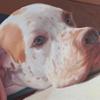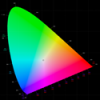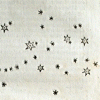It has been recommended that I begin at an image scale of no less than 2 arc-seconds/pixel. At that scale, the Ring Nebula occupies only 75 pixels. Rather than start with something small and cheap and upgrade repeatedly until I find a satisfying combination of mount and telescope, I would prefer to do enough research to jump straight to the final one.
Hi and welcome to cloudy nights.
You have a refreshingly open perspective on the issues of autoguiding and PE, and I agree the information you find on the web can be confusing. For some reason there is a strong emphasis placed on the PE characteristics of a mount - when that is separate from how well the mount can create a small image of a star when autoguiding - which is the whole goal of good autoguiding in the first place.
In short, when you hear advice I would look at the actual results people get with the equipment they have. There are many plots showing a reduction of PE, but it is rare to see information on a corresponding reduction in star size, or fwhm in arc-seconds. There are many people who could not get good results with mid-range equipment and found a dramatic improvement spending for high end - but that doesn't mean they could not have achieved similar results with mid-range using the right techniques and software.
This leads to advice not to bother with mid-range equipment, and discouragement that small stars can ever be obtained - hence a push towards large pixels. There is no doubt that a small refractor and big pixels, in arc-seconds, is easier for imaging - but if you want high resolution in something like the ring nebula - then you will need long focal length and small pixels, in arc-seconds - but the result is achievable as demonstrated by many people, including my images on the MetaGuide site with cge and cge-pro (but not cgem).
There may be more effort and care required with mid-range equipment - but the existence of results at 2" fwhm and below is proof that such results are achievable without a high end mount - and such results benefit from small pixels.
More on topic - I think it's great the OP's PE was reduced, and that may well make the mount more forgiving when guiding - but the number I like to see is the achieved fwhm in arc-seconds in long exposures - which sounds like what you are interested in also, ultimately.
Frank























